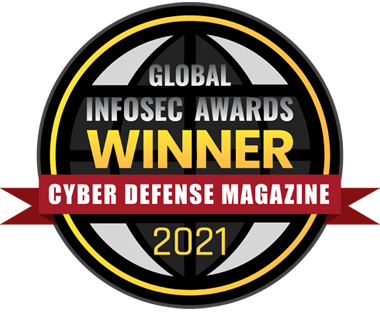The Importance of Active Directory Auditing for Security and Compliance
Active Directory (AD) is the identity and access management backbone of many organizations, providing authentication, authorization, and enforcing security policies for users. Given the importance of the role, the security and compliance of Active Directory are of prime importance. In this context, Active Directory auditing becomes a very important practice as it provides insight into changes, access patterns, and potential security threats.
Real-Time Change Alerts
CionSystems tracks and informs real-time alerts for changes done in Active Directory, such as incorrect logins, access modifications, role changes, and group membership updates. All these alerts are received through email and reports, making sure that the administrators are promptly notified of critical changes. We trap all changes regardless of how these changes are made to AD. Additionally, you can add your own policies for alters and remediation’s. For example, which users are making changes to AD? Are they authorized to make changes, Permission elevation etc. Know when those changes are made rather than much later. Catch it in the act Why? Read on!
Understanding Active Directory Auditing
Active Directory auditing is the structured inspection and logging of events that happen in the AD environment. This way, information regarding what users log in and out of the account, changes made to group policies, user account changes, and other major events can be kept. In organizations, this helps them detect unauthorized actions, compliance with regulatory standards, and react quickly to security incidents.
Why Auditing Active Directory Is Important
Improved Security – Regular auditing of Active Directory is a must for enhancing the security posture of an organization. Monitoring changes and access patterns helps organizations in the following ways:
– Detect Unauthorized Access: Identify and respond to unauthorized access attempts, thereby preventing potential breaches.
– Monitor Privileged Accounts: Keep track of activities performed by privileged accounts to prevent misuse.
– Permission elevations – Ensure permissions are not elevated for normal users
– Group Policy Changes – Ensure no unauthorized policy changes are made
– Identify Anomalies – Spot unusual behavior that may indicate a security threat, such as unexpected changes to group memberships or policy settings.
Following Industry Requirements
Several industries have very strict regulatory requirements in place that require IT systems to be thoroughly audited. Active Directory auditing supports:
Ensuring Compliance : Meeting regulations like GDPR, HIPAA, and SOX, where tracking access and changes is essential to record compliance standards.
Facilitating Audits :Auditors can be given required records to prove compliance with the compliance standard.
Accountability: Maintain an auditable trail of actions in case someone is held accountable for their activities in the system.
Best Practices for Active Directory Auditing
To get the most out of Active Directory auditing, consider following these best practices:
- Review and Modify Default Security Settings: All the settings may not be out-of-the-box designed according to your needs. Password complexity, account lockout policies, and permissions related to a group membership need to be reviewed from time to time and adjusted to ensure better security.
- Limit Privileged Users: Limit the administrative privileges to people who require them. This reduces the likelihood of mistaken or malicious changes that can make a way into your security.
- Audit Account Logon and Logoff Events: Monitor logon and logoff activities for users to identify unauthorized access and potential security threats.
- Eliminate Inactive and Obsolete Accounts: Periodically identify and eliminate inactive or obsolete accounts to reduce the potential entry points for attackers.
- Enable Real-Time Auditing and Alerting: Use real-time auditing tools to receive alerts on critical changes or suspicious activities in real time to take prompt action on potential threats.
- Maintain Regular Backups and Recovery Plans: Regularly back up Active Directory and have effective recovery plans to quickly restore operations in case of a security incident or system failure.
- Patch Vulnerabilities on a Regular Basis: Keep your systems updated by regularly applying patches to address known vulnerabilities, thus reducing the chances of exploitation.
How CionSystems Can Help
CionSystems offers a complete range of solutions designed to strengthen the security and compliance of Active Directory.
Their services include:
Real-Time Change Alerts
CionSystems tracks and informs real-time alerts for changes done in Active Directory, such as incorrect logins, access modifications, role changes, and group membership updates. All these alerts are received through email and reports, making sure that the administrators are promptly notified of critical changes. Additionally, you can add your own policies for alters and remediation’s. For example, which users are making changes to AD? Are they authorized to make changes, Permission elevation etc. Know when those changes are made rather than much later. Catch it in the act!
Easy Management
Administrators can easily manage thousands of domains, and secure all objects and applications from a single web console for streamlined management of Active Directory.
Advanced Reporting
CionSystems provides deep visibility across your entire Active Directory and enterprise infrastructure with hundreds of out-of-the-box reports tailored to meet the specific needs of an organization.
Delegation and Workflow
Their solutions support role-based access control, thereby delegating tg the number of high-privileged accounts. Moreover, they support workflow capabilities for enforcing proper governance in access control of resources to ensure that owners of resources can att people have the right access without exceptions.
Disaster Recovery
CionSystems provides disaster recovery solutions that will enable organizations to recover any object down to a single attri In the case of a critical breach or disaster, their software can reduce the downtime to minimum levels, which will ensure business continuity.
Conclusion
Active Directory auditing is one of the essential components of any organization’s security and compliance strategy. With the implementation of best practices and use of advanced tools, such as those offered by CionSystems, organizations can effectively monitor and detect potential threats in their ectorial environments and ensure regulatory compliance. Proactive auditing improves security and brings peace of mind to an organization because its critical identity and access management infrastructure is undllance.



